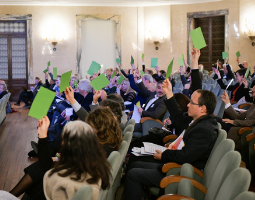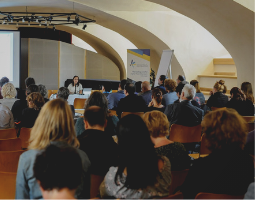Artistic Research and Frascati Manual
Research, especially artistic research, remains a hot topic for European Art Higher Education Institutions (HEI). On the one hand, the HEIs should and want to conduct research; moreover, in many countries they have to give evidence that the teaching they offer is research-based. On the other hand, recognition of the equivalence of Artistic Research (AR) with research in the humanities, natural sciences or social sciences is still not a matter of course. Especially in those countries where national legislation does not explicitly provide for recognition of the equivalence of AR with any other research, many research funding bodies find it difficult to provide financial support or to provide the necessary research infrastructure for AR projects.
If you ask for the reason why this is as it is, it is often referred to the so-called Frascati Manual, a kind of guideline that is used by statisticians, scientists and politicians worldwide as a framework for setting research policy and practices. The Frascati Manual was first published in 1963 and has since been regularly updated by a standing working group under the supervision of the OECD (Organisation for Economic Co-operation and Development). In its most recent edition, published in 2015, there is a section on the role of research in the arts for the first time ever, which is well-meant but remains unclear in its key points: the distinction between 'Research for Art' and 'Research on Art' (Section 2.6) leaves open whether what is understood among the members of the community as artistic research meets the five basic criteria (Section 1.33) that must be met in order to be recognised as eligible research in the sense of the OECD. The ambiguity of the wording on the role of Research for and on Art in the Frascati Manual is largely due to the fact that the main players in the field of AR did not succeed to speak with one voice in the run-up negotiations of the Frascati Manual's 2015 edition.
This deficiency should not be repeated.
The AEC therefore took the initiative a year ago to bring together all the key players dealing with AR. A first meeting with representatives of all art disciplines (including media, architecture and design) took place in Vienna in August 2019. Since, it has been agreed on key points of a joint paper, and first meetings with representatives of the OECD working group have taken place. Associations such as SAR (Society for Artistic Research), Cilect (Centre International de Liaison des Ecoles de Cinéma et de Télévision), ELIA (European League of Institutes of the Arts), Cumulus (International Association of Universities and Colleges of Art, Design and Media) and EAAE are joining forces together with AEC to fight for a long overdue inclusion of AR into the OECD catalogue as a fully eligible research discipline at its own.
The new European Commission
The newly elected members of the European Parliament took up their duties in November. In December the time had finally come for the new Commissioners to receive their appointment certificates and start their work. However, it still took a few weeks until things were organised and activities became noticeable to outsiders. Of course, this period of time was somehow troubled by the British MEPs taking their farewell.
Anyway, since the end of January / beginning of February it looks like as if the functioning of the parliament has reached its normal operating temperature. What is striking is the impressing number of young parliamentarians who are bustling around in the cultural sector attracting attention with fresh initiatives (e.g. by organising a hearing on the threat to the freedom of art or the contribution of culture to tackle the climate change). The work of Mariya Gabriel, the new Commissioner for Innovation, Research, Culture, Education and Youth, is leaving its first traces. Mariya Gabriel has the reputation of being a tough worker, always well informed and a good listener. It is still too early to report tangible results, but all in all the first visible signs allow cautious optimism.






